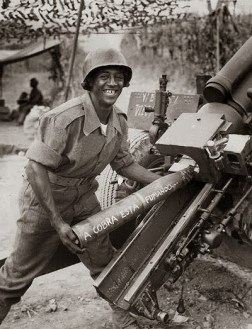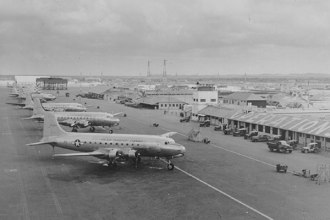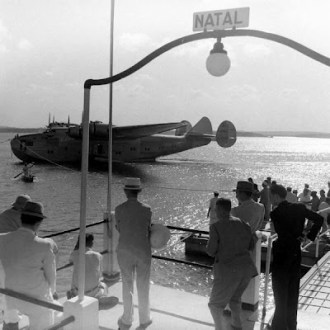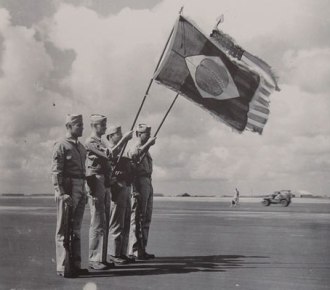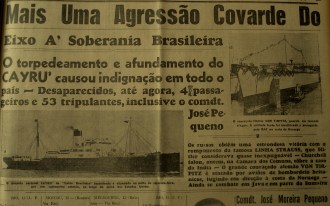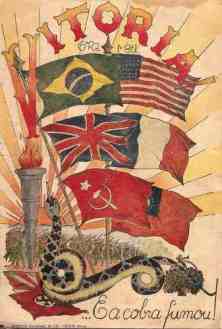
EVENTS OF THE SECOND WORLD WAR IN NORTHEASTERN BRAZIL
Rostand Medeiros – https://pt.wikipedia.org/wiki/Rostand_Medeiros
No one disputes the importance of Natal in the context of Brazil’s participation in World War II. The existence of an intense traffic of transport planes and bombers, between the air bases on the island of Ascension, Dakar and Accra, was a contributing factor in the Allied victory in this conflict. In addition to support point for air, do not forget that Natal aircraft patrolling the Brazilian coast were destroyed and also some submarines.
But Natal was not just the only Brazilian city that participated in this effort by the Allied victory. Even to a limited extent, other cities also had air bases and helped Brazil in its war effort. Fortaleza, capital of Ceará state, was one of them.
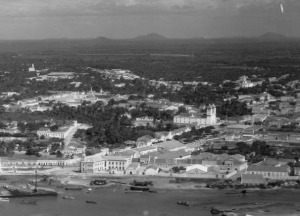
The First Air Bases and the Americans arrived
In this city the first airfield was the “Alto da Balança”, which became a point of support of the Brazilian National Air Mail planes.
The site was maintained by a unit of the Brazilian Army since September 21, 1936 and also served for the Brazilian and foreign airlines. In the history of the “Alto da Balança” Field, was stopping point for various foreign aviators who carried out air flights. One of these was the famous American aviatrix Amelia Mary Earhart, that landed in Fortaleza on June 4, 1937.
The researchers Augusto Oliveira and Ivonildo Lavor, authors of “The history of aviation in Ceara”, when the Americans were deploying their bases in the Northeast of Brazil, even before the Brazilian declaration of war against Germany and Italy, they decided that Fortaleza on the air base site would be built on old farm called “Sítio Pécy”, which became known as “Pici Field”, and construction has started in July 1941.
When the track was still in its final construction phase, it was opened prematurely when a B-17 landed, when lost in relation to its original route. According to the two authors of “The history of aviation in Ceará,” the big four-engine plane caused some panic in Fortaleza.
Also according to Augusto Oliveira and Ivonildo Lavor, with the growth of air traffic for Natal, and the fact landing strip in “Pici Field” had completed a limited size, the command of the USAAF in the region decided to build a second landing strip at Fortaleza. The “Pici Field” was then under the responsibility of the U.S. Navy and the new site was given the name “Adjacent Field” and this was near the “Pici Field”.
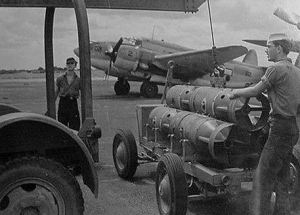
Inaugurated on December 10, 1943, “Adjacent Field” served a great purpose for five months until May 14, 1944, in order to vent the air traffic in Natal, the site was the starting point of large four-engine aircraft, most of them belonging to the 15th Air Force which had bases in southern Italy and moved non-stop directly to Dakar.
The American detachment that operated the base was known as 1155th Army Air Force Base Unit – Fortaleza (AAFBU Fortaleza), which was part of the South Atlantic Division, all subordinate to ATC – Air Transport Command.

During this period the use of “Adjacent Field” was very intense. 1.778 crossings were made from this base. From May 15, 1944, this type of operation, received only passing airliners or some aircraft that had an emergency.
Taking the “Land of the Sun”
Yet despite this apparent limited use between 1942 and 1945, there was always the presence of U.S. military personnel in the city of Fortaleza. There was even a local branch of the USO.
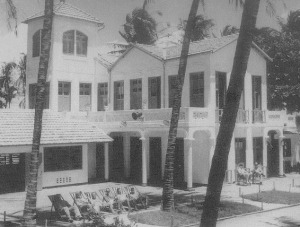
Its USO headquarters in Fortaleza was a sumptuous residence on the seaside on Iracema Beach. The old Fish Beach was a place still so little used by local people, where there were few vacation homes. The residence used by the Americans, a real palace, was built in 1920 by a wealthy city dweller who first called initially “Vila Morena”.
My friends in Fortaleza have commented, that information from their grandparents and parents who lived those days of North American presence in the city, it was thought that these foreign military headquarters USO was a nice place with an inviting breeze, a great swimming place in deliciously warm water under a blazing sun. And then enjoy delicious coconut water.

Apart from exploring the nature seaside, the U.S. military took advantage of other good things of Ceará. They maintained cordial relations with the girls in town. These were traditional families, usually beautiful, elegant, educated and did not care for criticism of local society. Soon these young men were derisively dubbed the “Coca-Colas.” It is said that the name in a derogatory way, they appeared to have the privilege of drinking the famous American soft drink, which at the time, was only seen on the big screen. They probably drank Coca-Cola plant from “The Coca-Cola Company” in Natal.

Memoirs
Despite this positive climate, the passage of aircraft by the Northeast of Brazil toward Africa was not without its problems.
In archives of the United States Army Air Force – USAAF, there are three unpublished reports of accidents with aircraft B-24, “Adjacent Field” which has as its point of departure or arrival.

Manufactured by Consolidated Aircraft, the legendary B-24, known as the “Liberator,” was a strategic bomber, with ten machine guns 12.7 mm Browning M2 model defense. He airplane had a total weight of 29,500 kg, could take nearly six tons of high-explosive bombs, at a maximum speed of 470 km / h, at a maximum altitude of 8,500 meters, with a range of 6,000 kilometers. The crew usually consisted of 10 militaries. This was the model airplane seen more in Fortaleza during the busiest time of the aircraft toward Africa.

The Problems with the B-24
The first accident occurred in the region on January 22, 1944, when the B-24 registered with the numeral 42-100307, led by second lieutenant Henry A. Daum, around one o’clock in the afternoon amid heavy rain, crashed into a mountain 25 miles southwest of Fortaleza. All six people on board died.

Limited information and few details, the report of the destruction of the B-24 pilot by second lieutenant Daum shows that the accident probably occurred in the mountains between the towns of Caucaia and São Goncalo do Amarante.
The second accident occurred on the morning of February 8, 1944, when the B-24H, 41-29293 belonging to 758 Squadron, the 459th Bomb Group, commanded under the second lieutenant Daniel B. MacMillin, of Stephenville, Texas, left for Dakar, Senegal’s capital today.

At that time, according to the documentation, each plane that took off from Fortaleza was obliged to send a coded message, in periods of pre-determined time, for they knew they were flying and their position. In the first three hours the message arrived, then nothing. The B-24 and his ten crewmen were lost. The documents show that for ten days were accomplished visual search tasks, but never heard what happened to this aircraft, with the lieutenant Daum and his crew.

But the best documented case was the crash of a B-24 bomber in Fortaleza.
The Tragedy of the B-24 of Lt. Brock
At around midnight and fifty minutes on February 28, 1944, the B-24H, numeral 42-52645, commanded by second lieutenant William M. Brock Jr., took off toward Dakar, but due to problems in one of the engines, made a turn to land and fell.

The operations officer “Adjacent Field”, major Ernest E. Dryer prepared a brief report about the tragic fact.
Major was called shortly after one o’clock, where he was informed by the officer of the day on 1155th AAFBU who had a major fire southwest of the “Adjacent Field” and that a Brazilian had said that a plane had crashed. For major Dryer this fire was too strong to be just a housing problem in any one local residence, and one of the planes to fly took off from the base site. But the fire covered a large area, the operations officer and a group of men did not even wait the return of the plane and left in car to investigate.
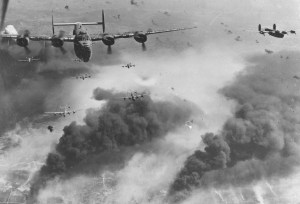
Upon arriving at the scene of the fire, major Dryer found that it actually was an accident with a B-24 model airplane, with the number 42-52645. At the site were already members of the police and fire department of the city of Fortaleza to keep the fire under control.
The operations officer, took command and sent a messenger back to base to inform the medical officer to bring ambulances and military police. Immediately work was started to report the details of the accident. They soon found that all ten crew members had died.
Airplane parts, broken bodies and personal belongings were scattered over a distance of 1000 feet. The body of one crew member was hanging from a tree. American guards were placed to guard the wreck and waited for the medical officer of the base to take over the charge of the bodies.
Checking the number of the plane with the boot record, it was discovered that one B-24 was the last to leave the base that night and crashed three minutes after takeoff.

The plane was so damaged that a check of the controls was not possible. It was noted that the right wing had hit a tree and was broken. For this reason the path of the plane was close to the ground and had shifted about 90 degrees to the right. Then hit the ground, and was dragged in a straight line for about 1000 feet, disintegrating along the way.
Finally, the B-24 hit a tree, stopped in a ditch and exploded, throwing debris over a wide area. In the fall the aircraft destroyed an empty shack and an oil tank was thrown through the roof of another hut, but no one on the ground died.

The documentation by the main witness, the Brazilian, Laura Ramos Barreto, who lived about a mile away from the base, which today is probably in the neighborhood of Montese.
In her report delivered at the premises of the 1155th AAFBU, Laura said she always listened at night the planes taking off from “Adjacent Field” and heard that on this occasion an aircraft whose engines stopped suddenly near her residence. She was surprised, when looking at the plane she saw three explosions on the ground, followed by heavy fire.

To Major Ernest E. Dryer, examination of the propellers showed that at least three of the engines had operational capacity, but that could not be given a conclusive opinion, due to the extent of damage.
The investigations showed that the cause of the accident was a failure in one engine, which was certainly the most destroyed immediately after takeoff. Probably the pilot retracted the flaps at a very low altitude, thus making the B-24 fly too close to the ground, hitting a tree, tearing the plane’s right wing and causing the explosion.
The bodies were buried in Fortaleza and transferred to the United States in 1947.
They were part of the following crew of the B-24H, 42-52645;
-Second Lieutenant William M. Brock Jr., pilot
-Second Lieutenant Robert D. Wear, co-pilot
-Second Lieutenant James H. Beatty, navigator
-Second Lieutenant William D. Davies, bomber
-Sergeant Kelley L. Epley, flight engineer
-Sergeant Homer E. Hill, radio operator
-Sergeant William C. Ship, gunner
-Sergeant Thomas M. Bassett, gunner
-Sergeant Leo P. Desjardins, gunner
-Sergeant Jack Z. Roby, gunner

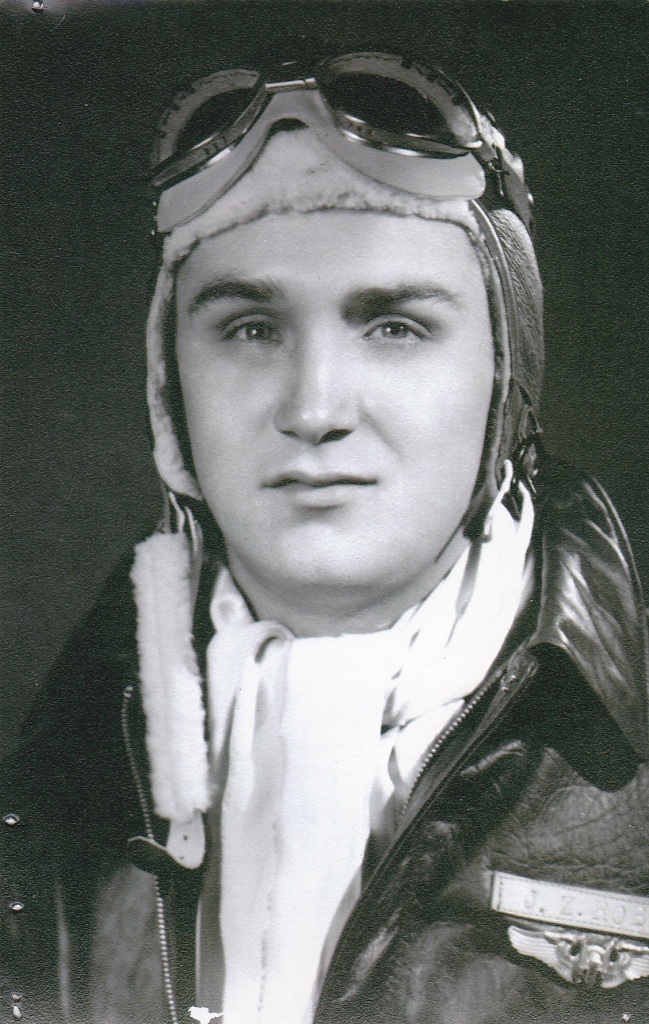
The participation of air bases in Brazil was not only restricted to Natal, these reports show that there are certainly many stories to be told.
P.S. – I would like to thank the researcher Ângelo Osmiro, for your support in this work.

